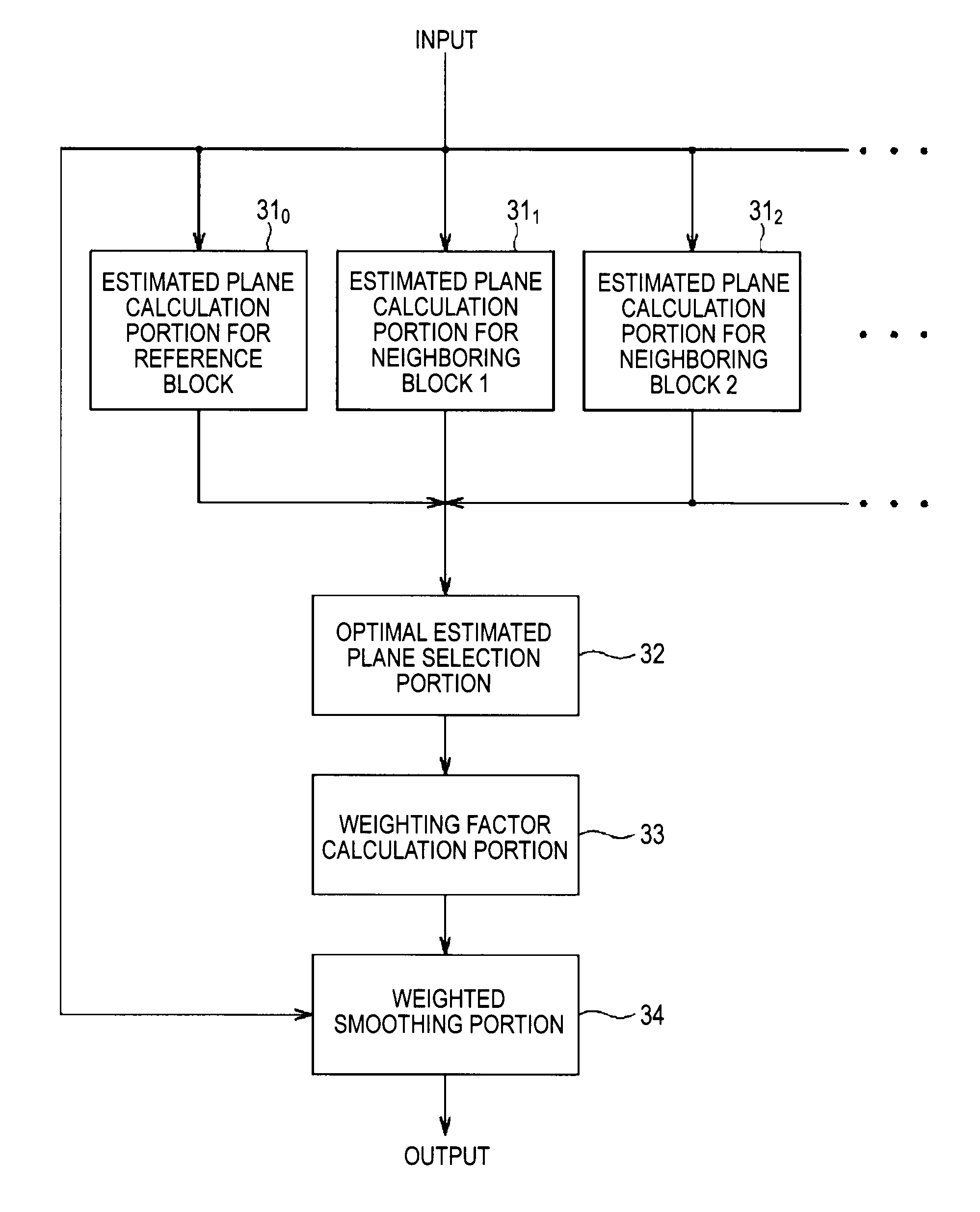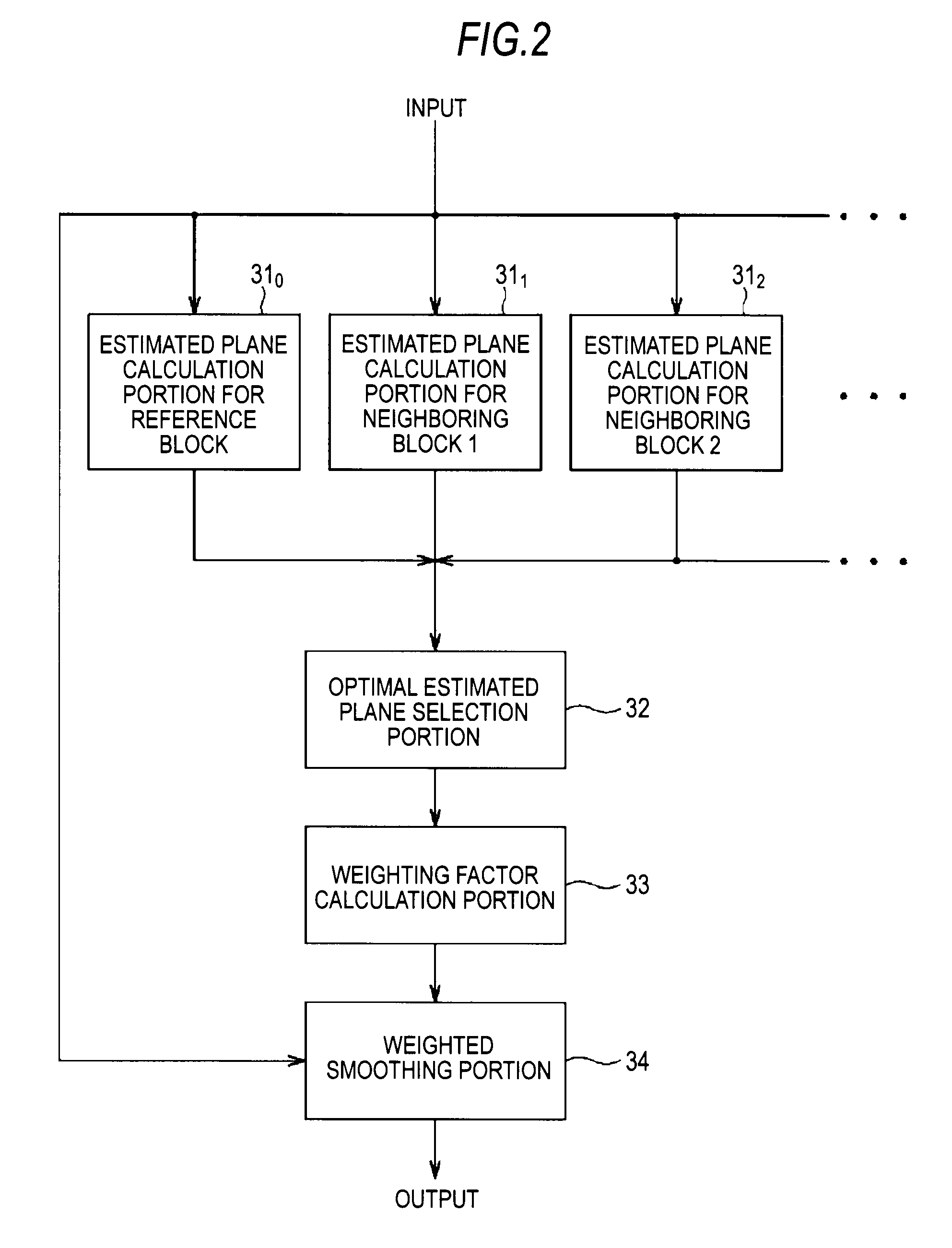Image processing device and associated methodology of processing gradation noise
a technology of image processing and noise reduction, applied in the field of image processing, can solve the problem of poor denoising performance of images with gradation
- Summary
- Abstract
- Description
- Claims
- Application Information
AI Technical Summary
Benefits of technology
Problems solved by technology
Method used
Image
Examples
Embodiment Construction
[0028]Hereinafter, embodiments of the present invention will be described specifically with reference to the drawings in the following order.
[0029]1. Camera configuration with reference to FIG. 1
[0030]2. Image processing example 1 with reference to FIG. 2 through FIG. 5C
[0031]3. Image processing example 2
[0032]4. Modification with reference to FIG. 6
1. Camera Configuration
[0033]FIG. 1 shows an example of a camera configuration according to an embodiment of the present invention. Light from a subject is collected onto an imaging element 13 by an optical system, such as a lens 11 and an aperture 12.
[0034]The imaging element 13 is formed, for example, of a CCD (Charge Coupled Device), a CMOS (Complementary Metal Oxide Semiconductor) imager, or the like. It converts received light into an electric signal and outputs the electric signal to a correlated double sampling circuit 14. More specifically, the imaging element 13 receives light coming from the subject via the lens 11 and the aper...
PUM
 Login to View More
Login to View More Abstract
Description
Claims
Application Information
 Login to View More
Login to View More - R&D
- Intellectual Property
- Life Sciences
- Materials
- Tech Scout
- Unparalleled Data Quality
- Higher Quality Content
- 60% Fewer Hallucinations
Browse by: Latest US Patents, China's latest patents, Technical Efficacy Thesaurus, Application Domain, Technology Topic, Popular Technical Reports.
© 2025 PatSnap. All rights reserved.Legal|Privacy policy|Modern Slavery Act Transparency Statement|Sitemap|About US| Contact US: help@patsnap.com



